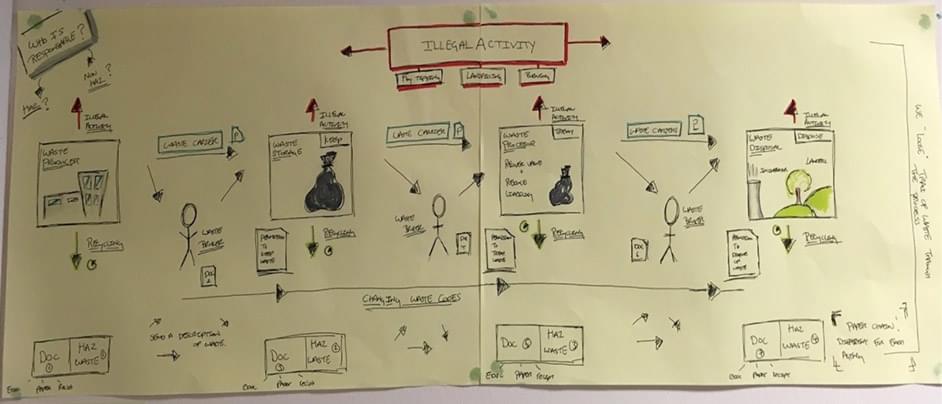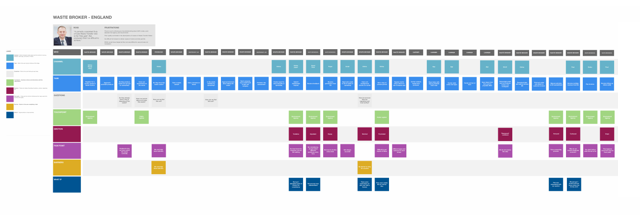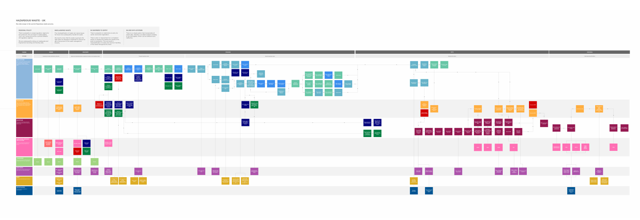Waste tracking
Each year the UK produces over 40 million tonnes of waste, all of this waste needs to be transported, treated and disposed of correctly.
Each year the UK produces over 40 million tonnes of waste, all of this waste needs to be transported, treated and disposed of correctly.
The UK waste management industry currently has over 70,000 employees and an annual turnover of around £9 billion with over 23 million waste movements each year.
DEFRA worked alongside SEPA, NIEA, Environment Agency and NRW on a Discovery project to scope out a UK waste tracking service, aimed to track the movement of all waste, to benefit both the environment and the economy. Read more about this project.
I was part of the core project team based in Warrington working as a lead designer on a 12 week discovery project. During the discovery I was responsible for:
Paper sketches were used to capture conversations with subject matter experts around the current waste lifecycle. Images were used to highlight loopholes in policy, areas of lost data, duplicate reporting and excess paperwork.

After an initial broad phase of user research we began to list and priorities a series of problem statements in order align efforts and define the scope of the service.
Problems:
At the end of the exercise we produced a Challenge Statement for the remainder of the discovery project:
Capture and make available in one place the most useful data on the movement & transfer of ownership of waste.
Throughout discovery a number of research methods were used to gain insights into the current service. As a team we carried out 17 site visits, 6 workshops and 21 interviews as well sending out 3 surveys. The team covered every sector of the waste industry from producers to waste treatment plants, landfill sites and internal teams including data analysis, waste crime prevention and enforcement.
User journey maps were used to create visual representations of how users experience the services. Three journey maps were created based on in-depth interviews and discussions, these were:
The Journey maps were not an attempt to represent the full complexity of the service. Instead they focused on one typical instance highlighting what the user encountered, how they felt and what caused them problems. These maps were used to get a better understanding of real world situations and processes.

In contrast to user journeys the service blueprints focused on the underlying resources and processes of the service, both seen (Front-stage) and unseen (Back-stage) by the user.
Two service blueprints were created:
The blueprints were used to get an understanding of the current as is process for moving waste and how this is currently supported by SEPA, NIEA, Environment Agency and NRW.

At the end of discovery the waste tracking project but in a successful bid for GovTech Funding.
The original discovery team were tasked with packaging up the key outputs from discovery and presenting these to successful bidders over conference calls and in person at an inception meeting held in Manchester in December 2018.